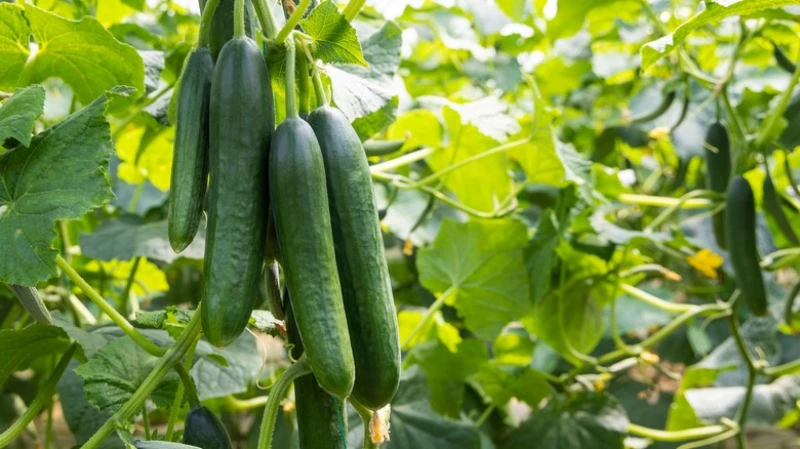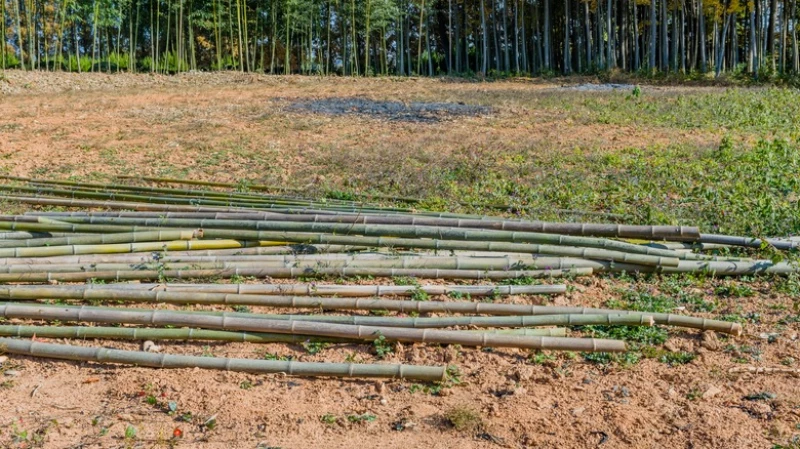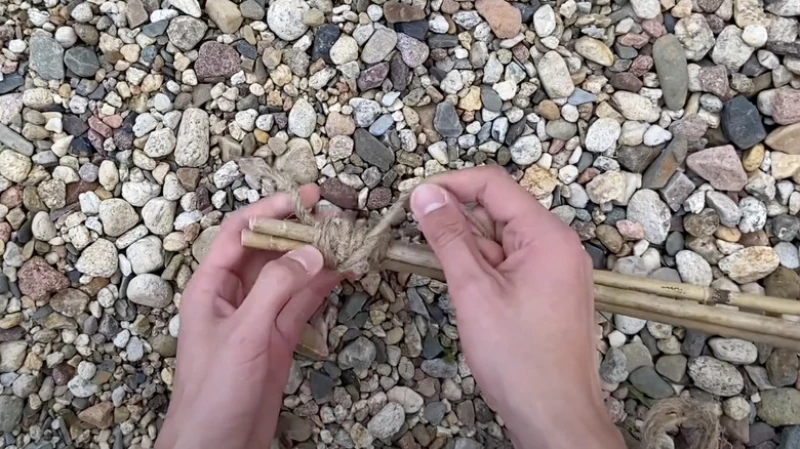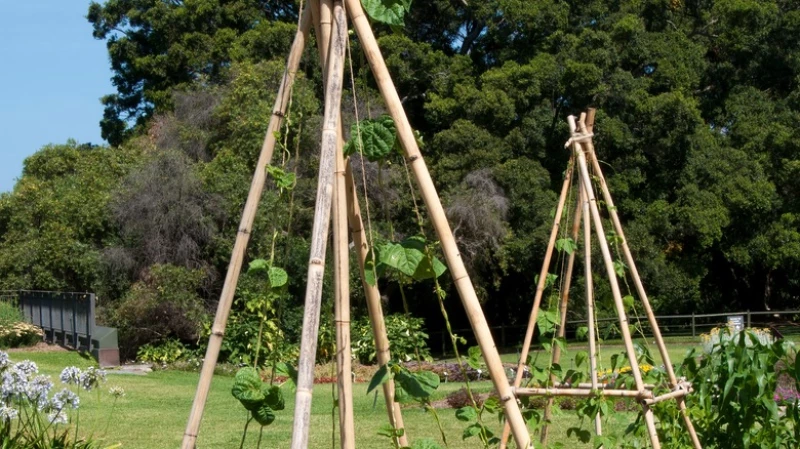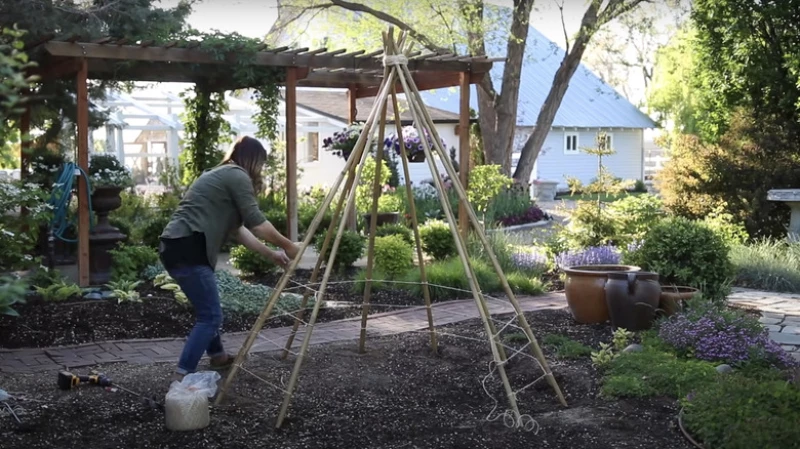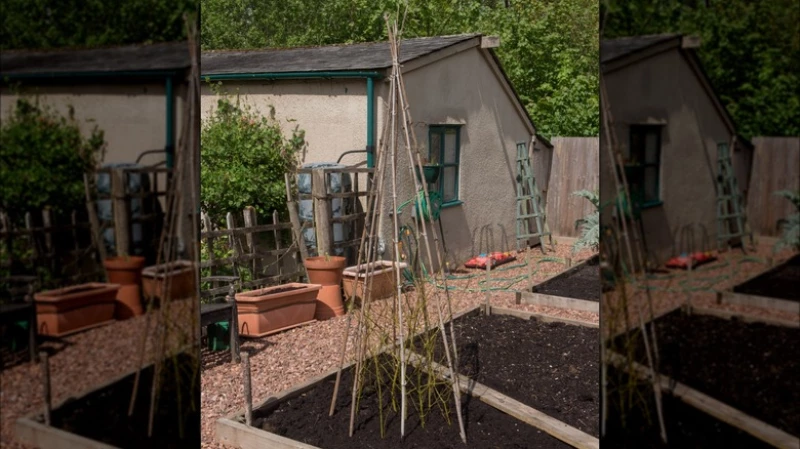When you cultivate your own vegetable garden, you have access to an abundance of fresh greens for your culinary creations. Common choices for home gardens include tomatoes, lettuce, onions, and cucumbers. While some vegetables can be planted together, others require their own space to thrive. Cucumbers, for example, flourish when grown on trellises. These plants do best when they have the opportunity to climb and spread their vines around poles. Trellises provide the support and air circulation that cucumbers need to grow successfully. Furthermore, growing cucumbers vertically on a trellis creates more space for other plants to thrive beneath them. Constructing a trellis is a simple task. In fact, a bamboo tepee trellis, like the one demonstrated by TikTok user @laurenschell2, can be easily replicated in any backyard.
To create a bamboo trellis for your cucumbers, start by laying your bamboo poles on the ground. Take the bamboo poles and twine outside near your cucumber garden. Lay the poles next to each other on the ground with a little bit of space between them.
Lay your bamboo poles on the ground
Take your bamboo poles and twine outside near your cucumber garden. Lay the poles next to each other on the ground with a little bit of space between them.
Next, tie the poles together with twine. Grab the tip of each bamboo pole to create a bundle and wrap the heads with twine. Tie the twine about one inch from the top. Remember not to tie the twine too tight because you'll want the legs to be able to spread when you pick them up. So, lightly wrap the twine.
Tie the poles together with twine
Grab the tip of each bamboo pole to create a bundle and wrap the heads with twine. Tie the twine about one inch from the top. Lightly wrap the twine to allow the legs to spread easily.
After tying the twine, pick up the bamboo poles and spread the legs out on opposite sides to create a tepee. The canes should easily spread out since the twine is loosely wrapped. Once you spread each pole, tighten the twine to keep them secure.
Pick up the bamboo poles
After tying the twine, pick the poles up and spread the legs out on opposite sides to create a tepee. Once you spread each pole, tighten the twine to keep them secure.
Lastly, lash the twine around the entire trellis. This will provide additional support and stability to the structure, ensuring that your cucumber plants have a sturdy framework to climb on as they grow.
Lash the twine around the entire trellis
After creating the tepee structure, lash the twine around the entire trellis for added support and stability.
To create a sturdy trellis for your cucumbers, start by spreading out the bamboo poles and securing them with twine from top to bottom. The cucumbers need support to climb, so the twine will act as a ladder for them. Begin by wrapping the twine around one pole at the top, then extending it to the next pole and looping it around. Repeat this process for the remaining poles, leaving space between two poles to create an entryway. Tie off the twine at the last pole in the top section, forming a semi-circle. Move down to the next section and continue wrapping the twine around each pole until you have at least 12 rows of twine on the trellis.
Position the bamboo poles around your cucumbers
Place the bamboo tepee over your cucumber garden, ensuring the twine-wrapped poles make it easier to position. Sink the bottom of the poles into the soil for stability, around four to six inches deep. Depending on the cucumber variety, the weight of multiple cucumbers can strain the trellis, so consider adding rocks around the poles for extra support. However, sinking the bamboo poles securely should suffice to support the growing cucumbers.
Water your soil
Once your bamboo trellis is set up, water your soil and observe the growth of your cucumbers. If you constructed your trellis using bamboo and planted cucumbers, you may already notice some sprouting. In such cases, you can guide the vines to climb the trellis by gently wrapping or weaving them along the twine. With time, the cucumber vines will naturally begin to climb the trellis on their own. It's essential to check on your cucumbers daily to ensure they are growing on the trellis and staying within the designated area. Additionally, you have the option to create more trellises to cultivate different types of plants.
How long does a bamboo trellis last?
Bamboo, known for its lightweight and durable properties, is an ideal material for garden structures. The lifespan of a bamboo trellis can vary based on its usage. When used for decorative purposes, bamboo can remain in excellent condition for up to 15 years. However, if utilized in a garden setting where it is exposed to soil and occasional watering, the lifespan of a bamboo trellis can extend up to six years before signs of deterioration become noticeable. Factors such as moisture levels and soil composition can influence the longevity of bamboo canes. Despite these variables, you can expect your bamboo trellis to last for several years, allowing you to grow cucumbers annually for an extended period.


